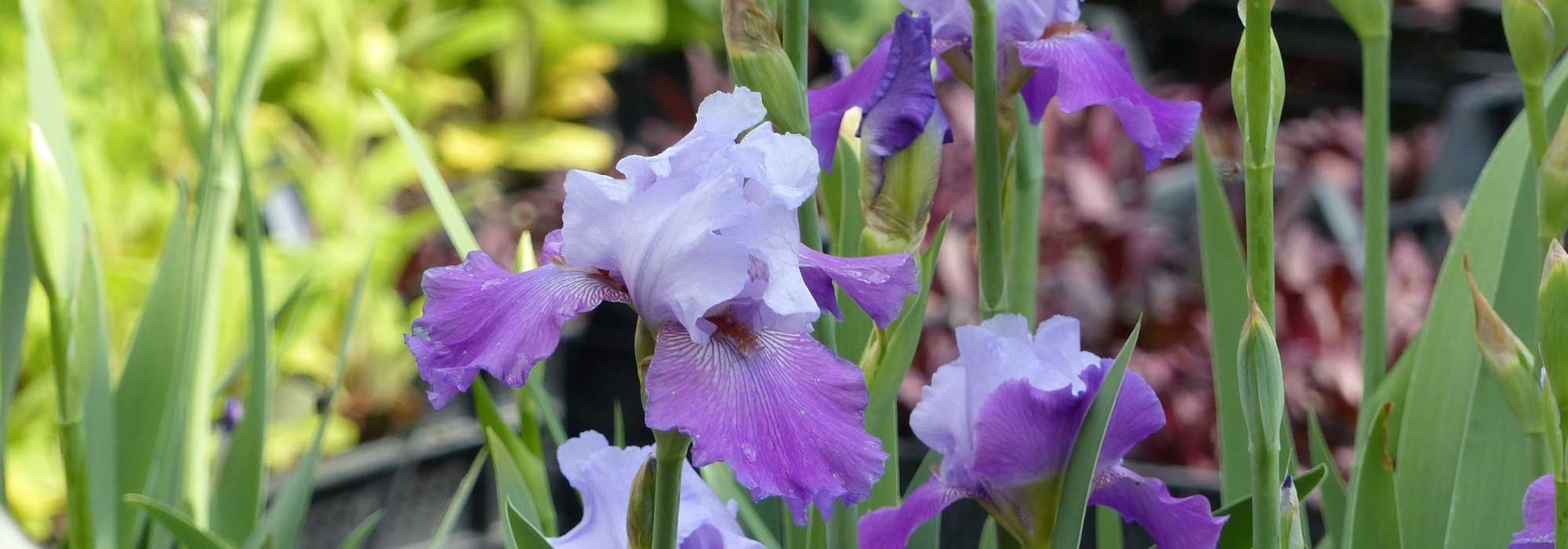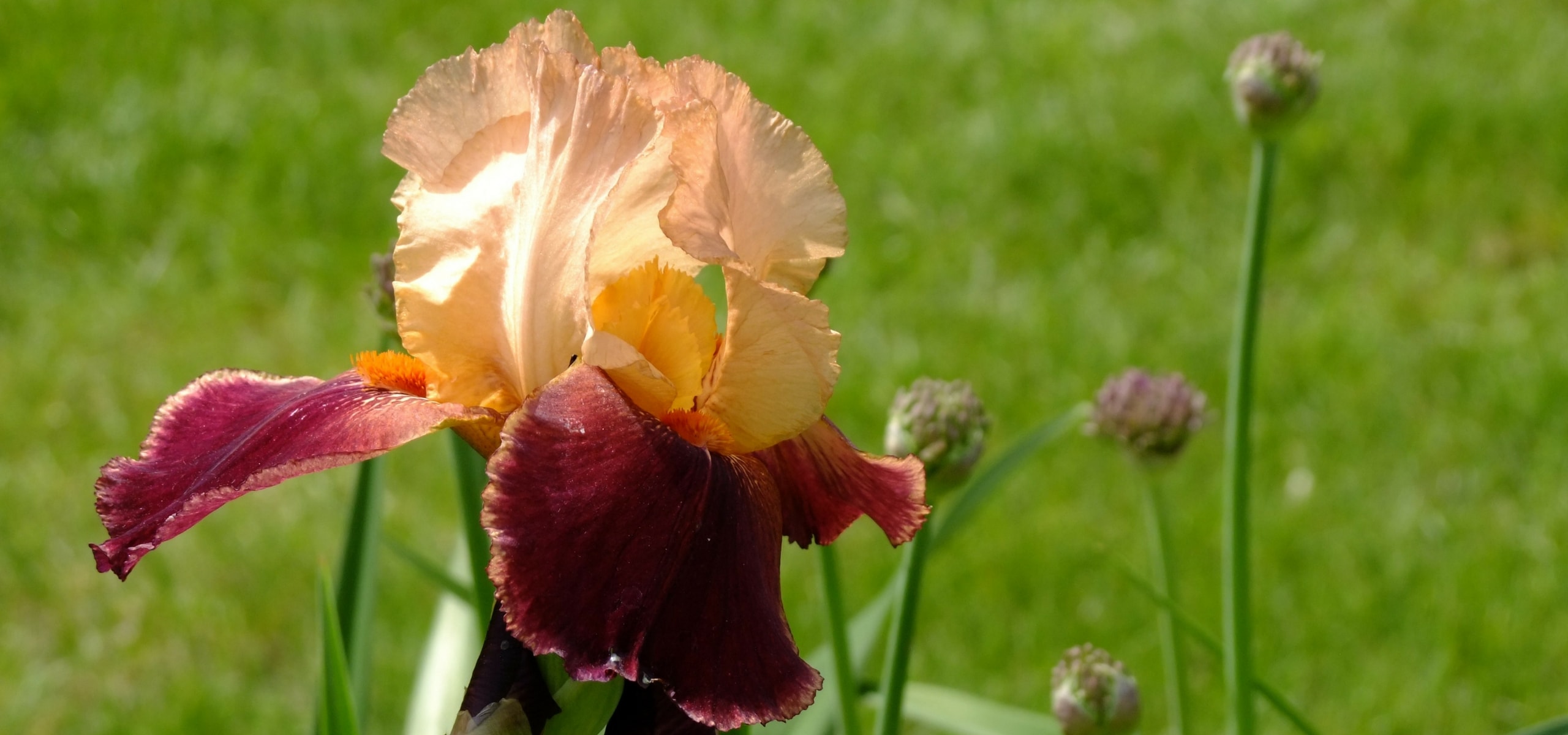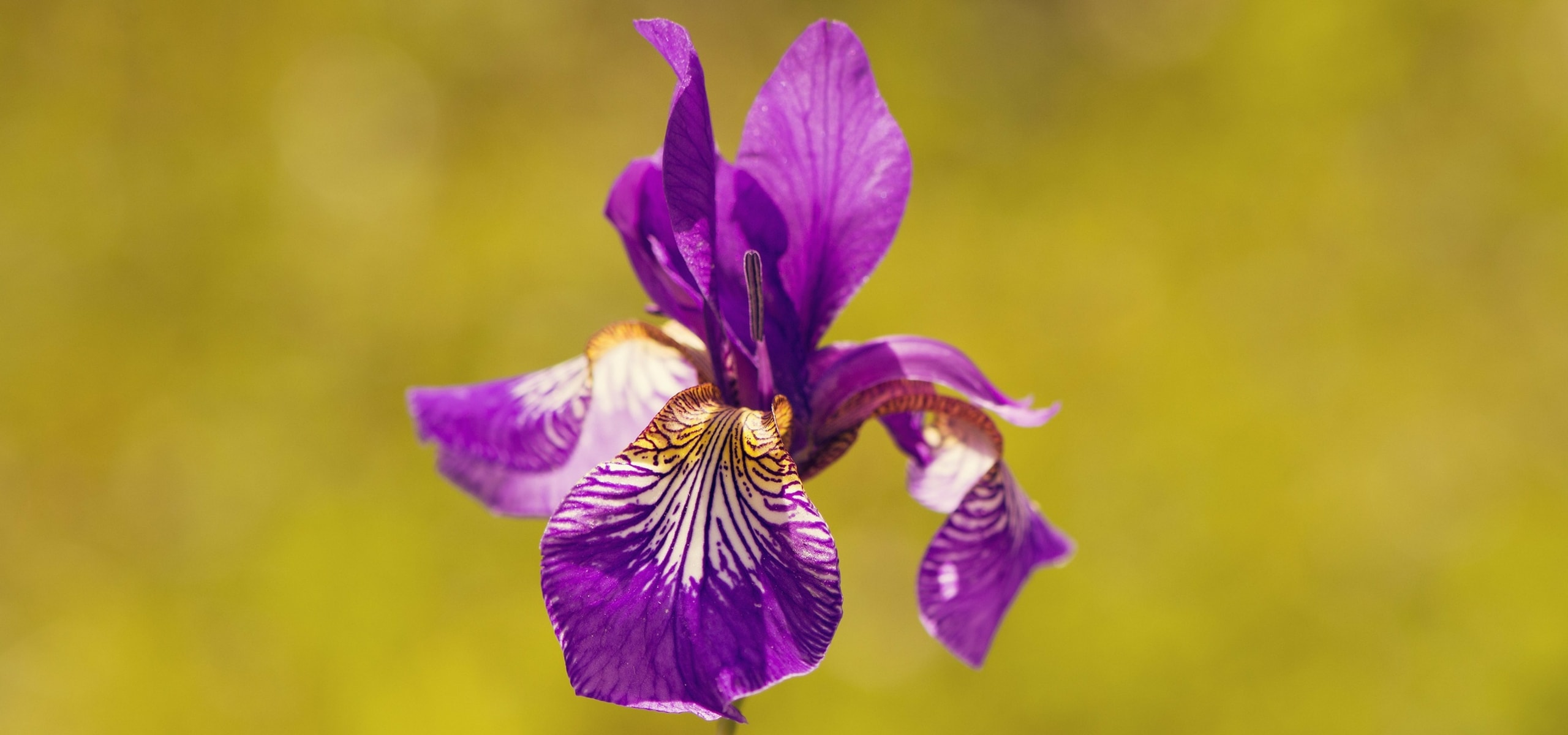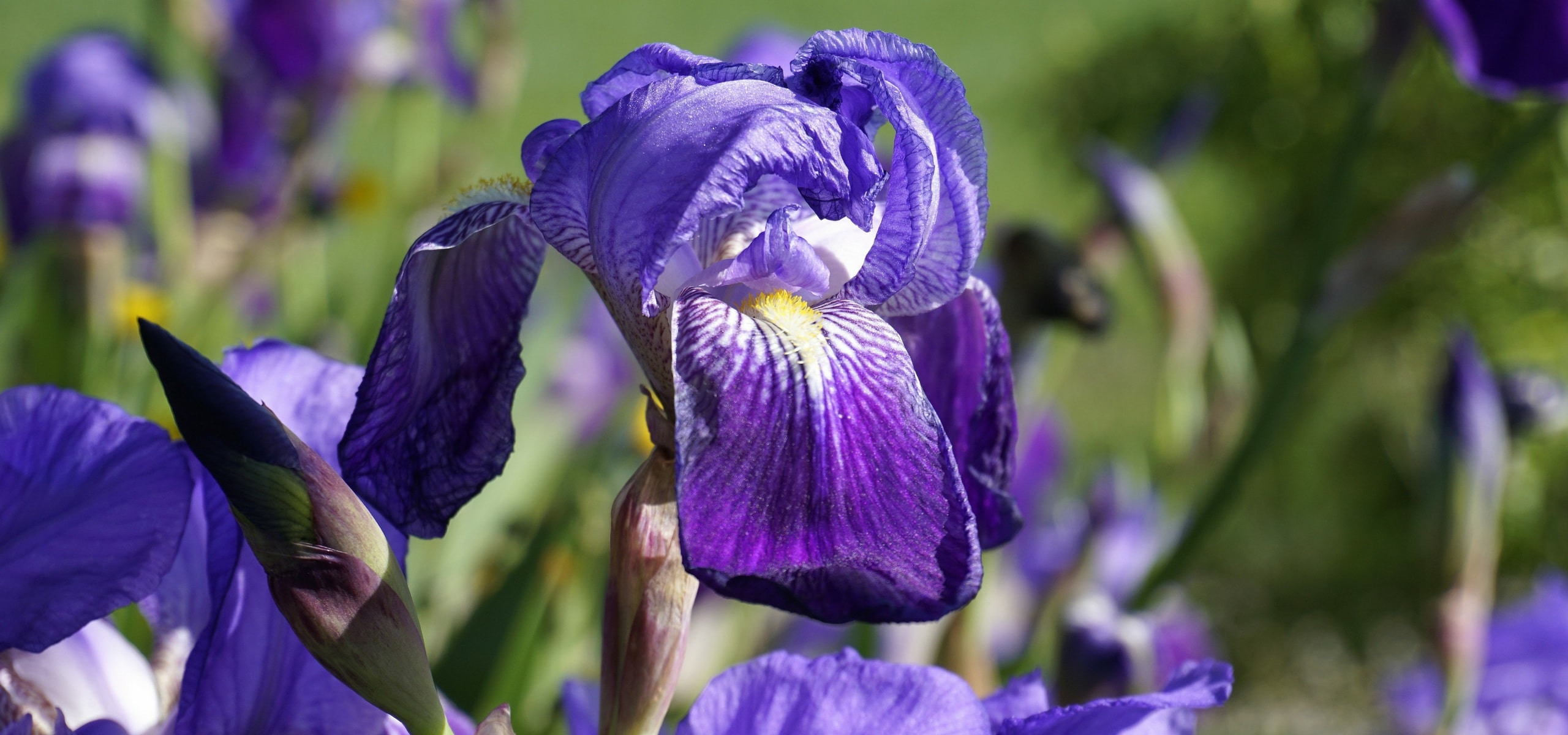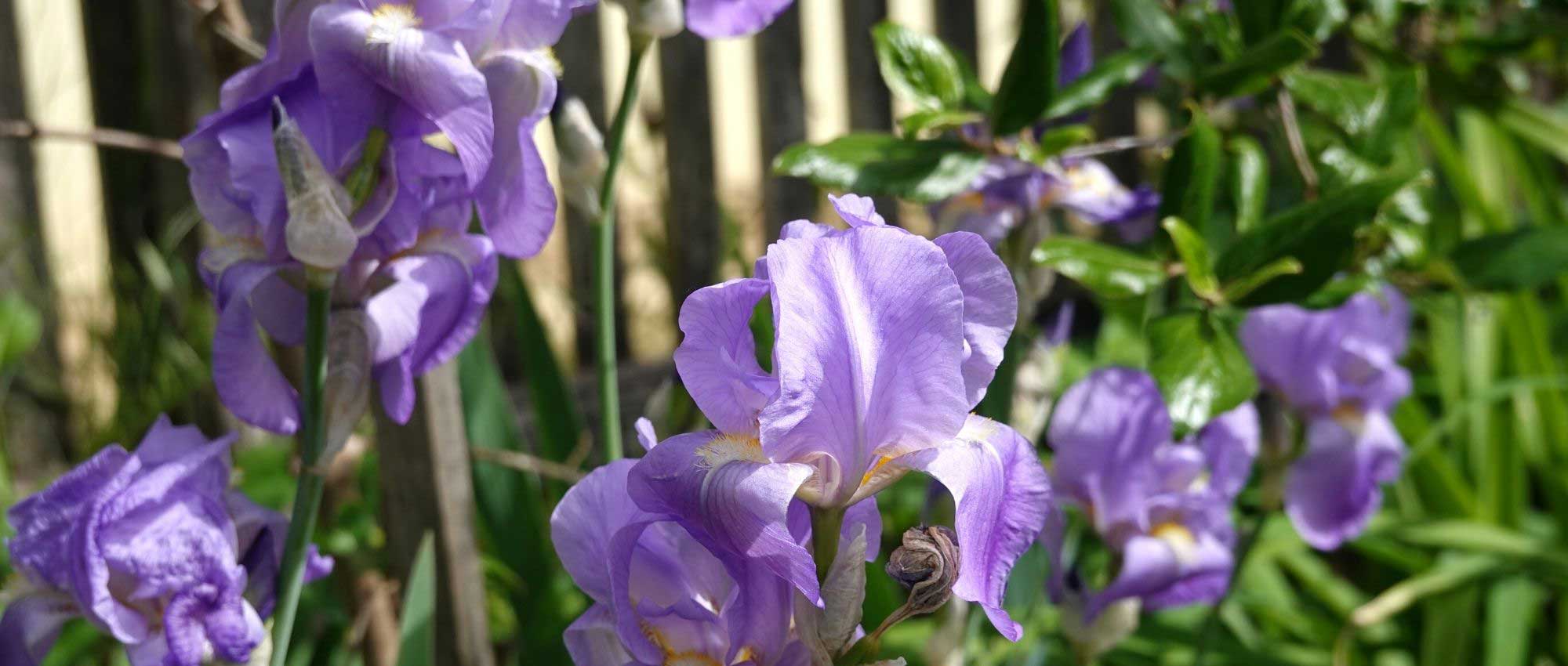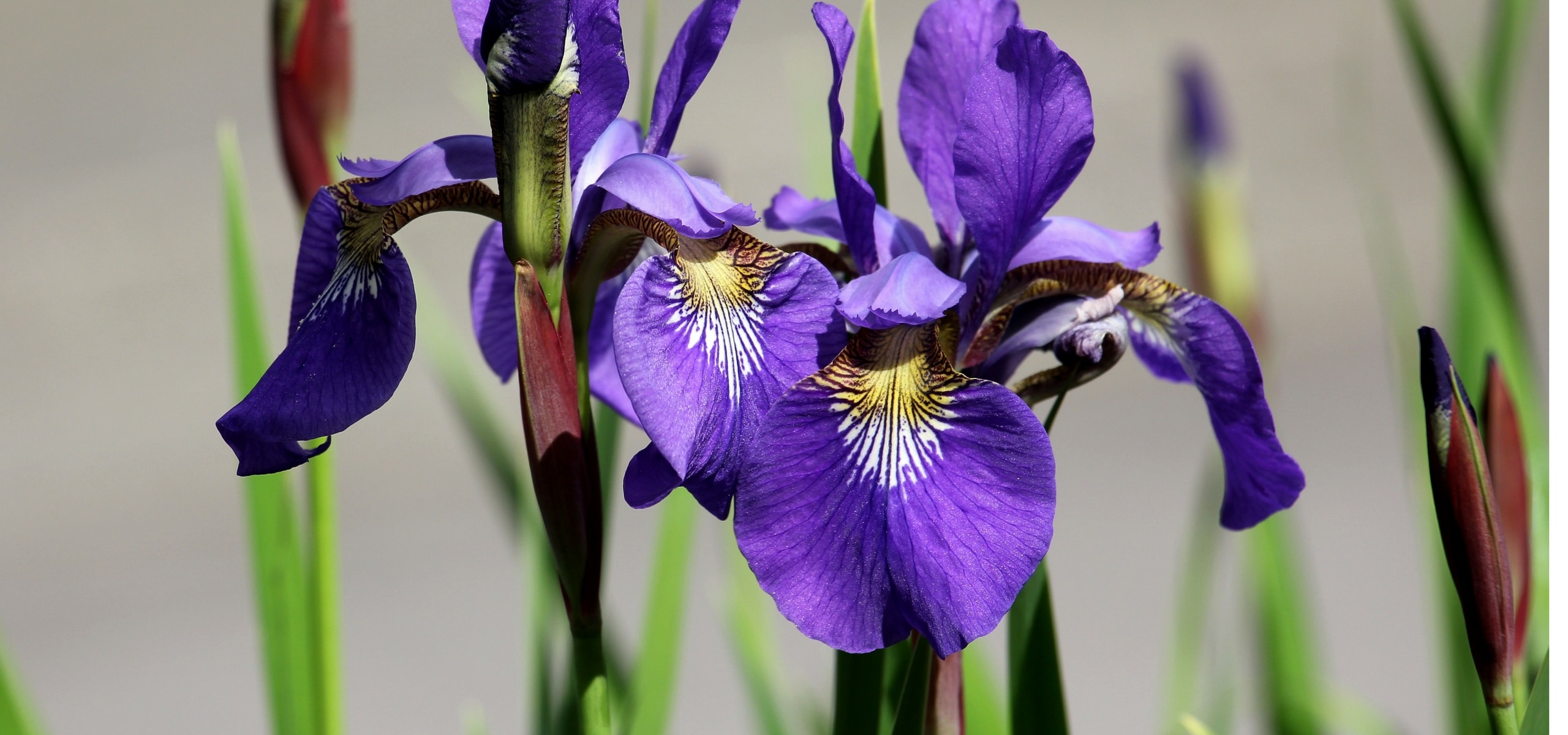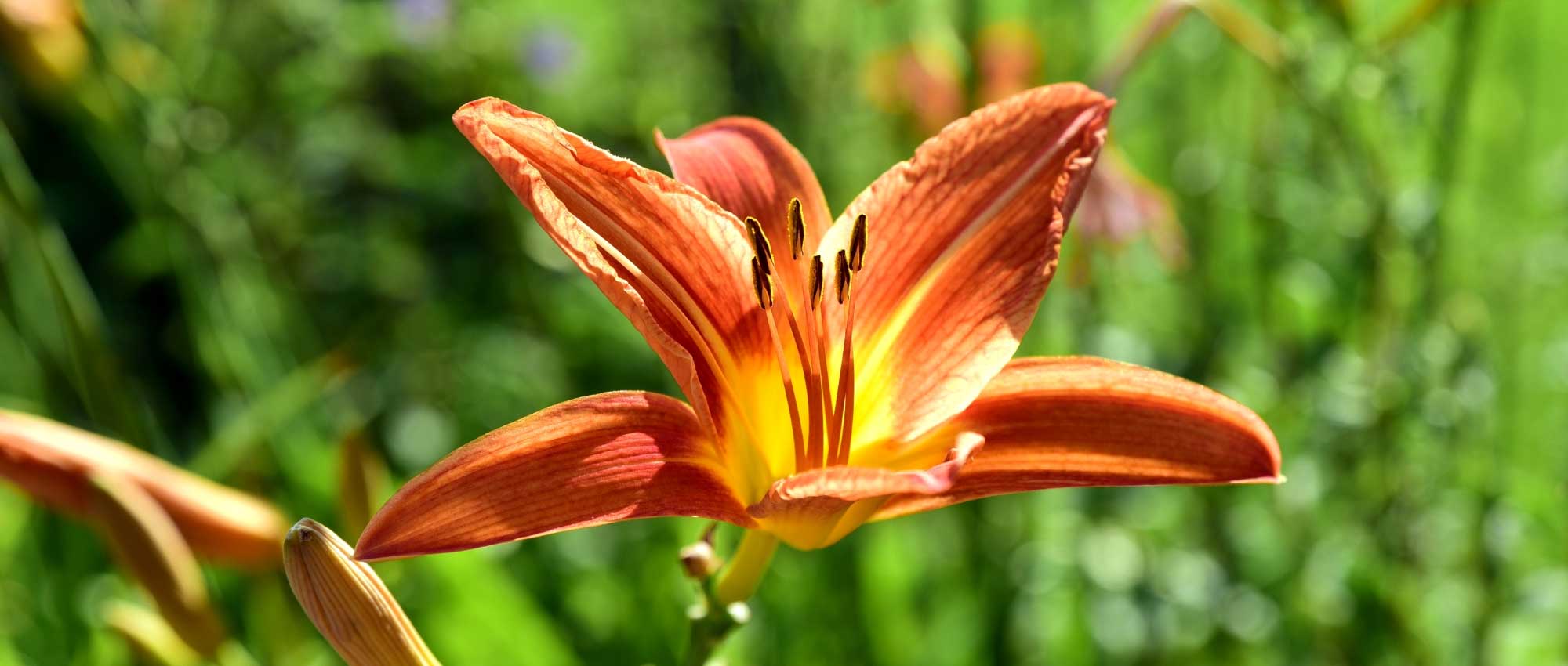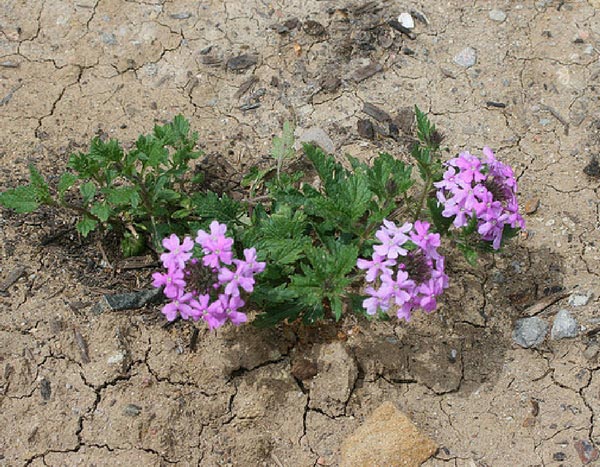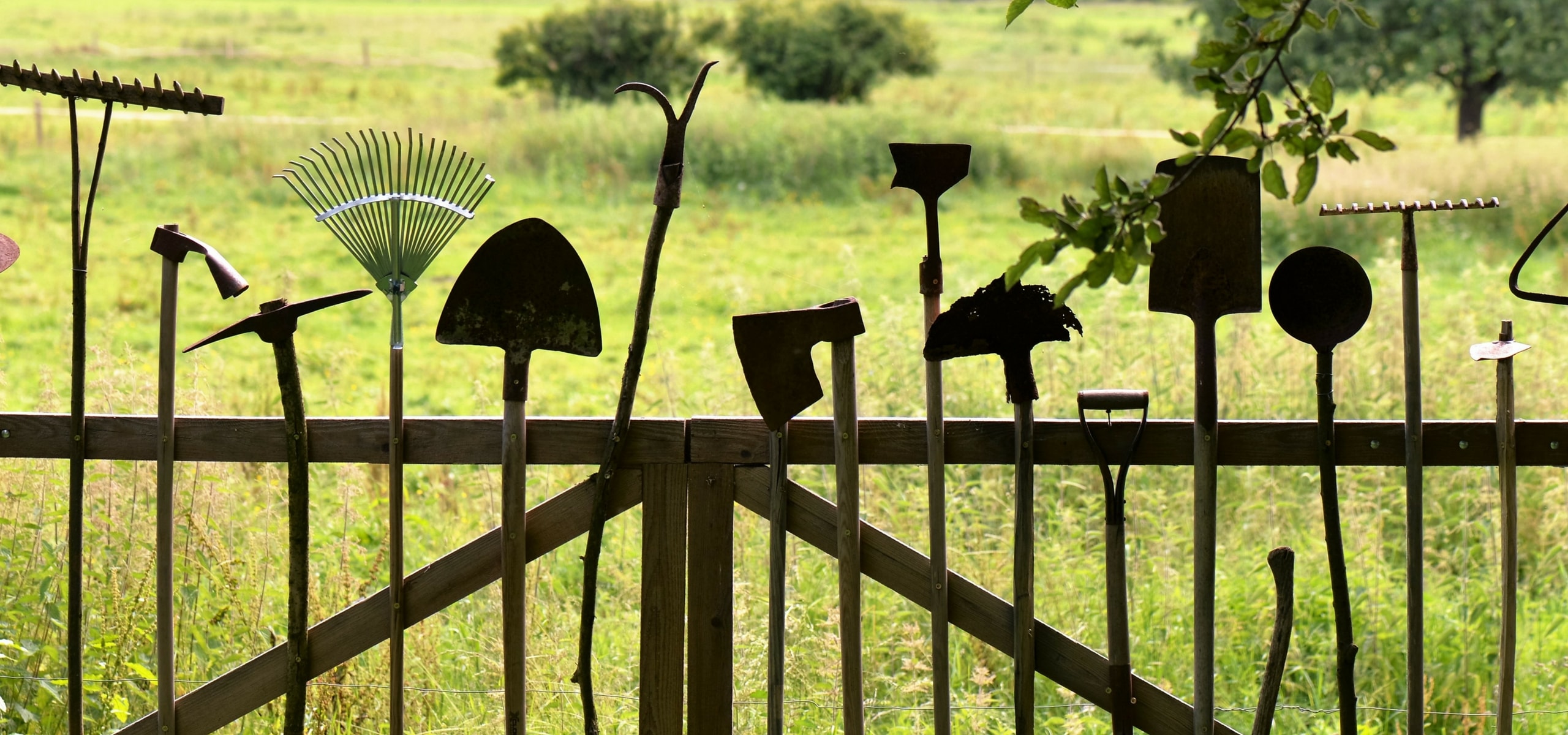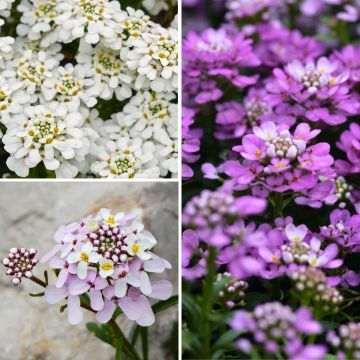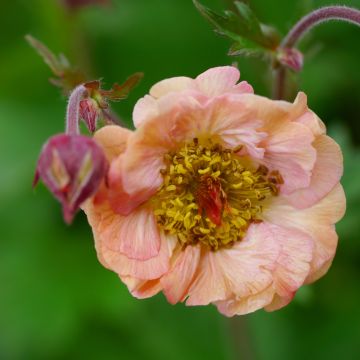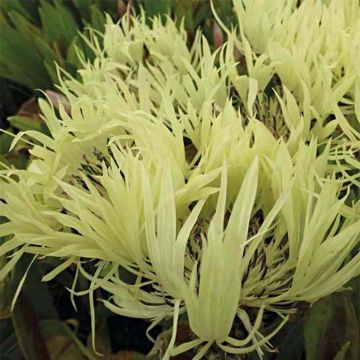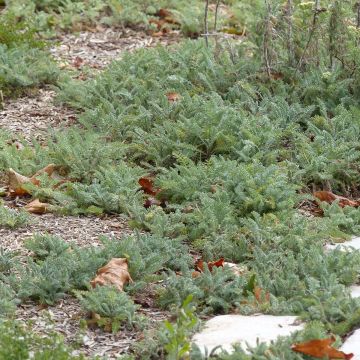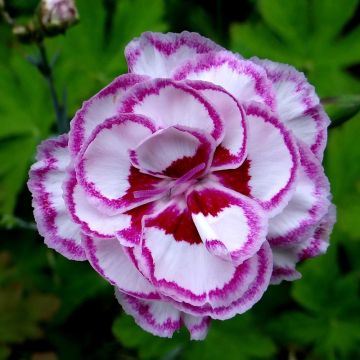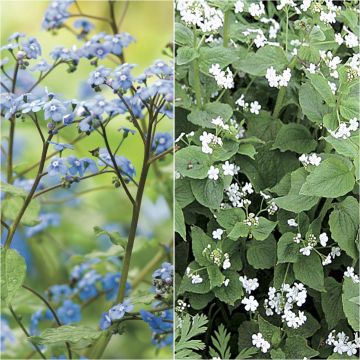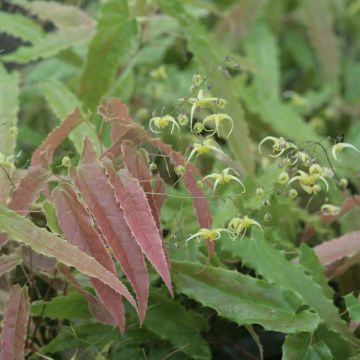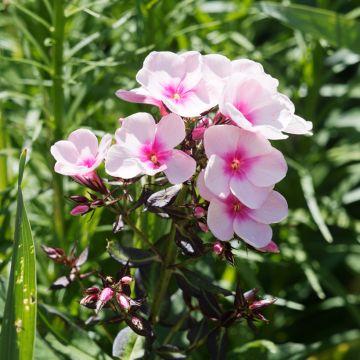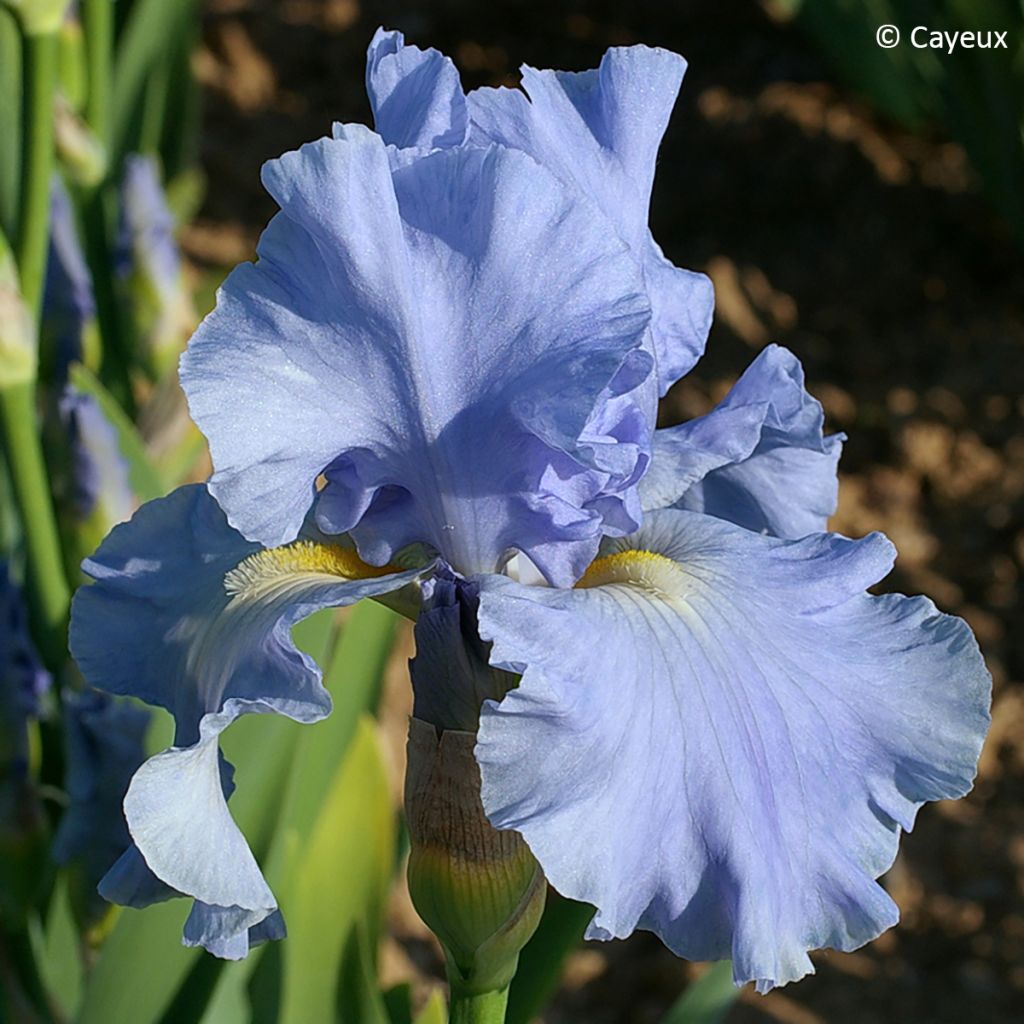

Iris germanica Aigue Marine -Bearded Iris
Iris germanica Aigue Marine -Bearded Iris
Iris germanica Aigue Marine
German Iris, Bearded Iris
Special offer!
Receive a €20 voucher for any order over €90 (excluding delivery costs, credit notes, and plastic-free options)!
1- Add your favorite plants to your cart.
2- Once you have reached €90, confirm your order (you can even choose the delivery date!).
3- As soon as your order is shipped, you will receive an email containing your voucher code, valid for 3 months (90 days).
Your voucher is unique and can only be used once, for any order with a minimum value of €20, excluding delivery costs.
Can be combined with other current offers, non-divisible and non-refundable.
Home or relay delivery (depending on size and destination)
Schedule delivery date,
and select date in basket
This plant carries a 12 months recovery warranty
More information
We guarantee the quality of our plants for a full growing cycle, and will replace at our expense any plant that fails to recover under normal climatic and planting conditions.
Does this plant fit my garden?
Set up your Plantfit profile →
Description
The Iris germanica ‘Aigue Marine’ is a remarkable garden iris variety distinguished by its flowers of a very pure sky blue, a crystalline colour barely interrupted by discreet pale yellow beards with white tips. Well-tiered along sturdy stems, the moderately undulate corollas have an attractive appearance. This fairly vigorous plant grows quickly, offering a long mid-season flowering and good performance in beds. This iris makes a strong impact in sunny spring borders.
The Iris germanica ‘Aigue Marine’ belongs to the Iridaceae family. It is a cultivar from the tall bearded irises group obtained in France in 1938 by Ferdinand Cayeux, from the cross-breeding between the 'Mado' and 'President Pilkington' varieties.
The Iris germanica species from which this cultivar originates is a natural hybrid between the Iris pallida and Iris variegata native to the Mediterranean region. This perennial ihas naturalised in many temperate regions of Europe, particularly on dry and sunny soil, sometimes along paths or on banks.
The Iris 'Aigue Marine' has an upright clump habit, the plant reaches approximately 85 cm in height when in flower with a spread of 45 cm. Its growth is moderately fast, with optimal flower production after 2 to 3 years of cultivation.
The Iris ‘Aigue Marine’'s flowers are large, measuring 10 to 12 cm in diameter. They consist of three upright inner petals and three outer trailing tepals of an iridescent sky blue, adorned with pale yellow beards and white tips. Each sturdy, sparsely ramified flower stem can bear on average 9 to 10 flower buds that bloom in succession over 3 to 4 weeks. This flowering occurs between May and June, in the middle of the iris season. The foliage is deciduous, composed of sword-shaped, flattened, slightly curved leaves arranged in a fan. They measure 30 to 50 cm long and about 3 to 4 cm wide, with a glaucous green hue. The root system consists of horizontal rootstocks, shallow, spreading laterally to form new growth points. The clump spreads over the soil without theoretical limit, with the central rootstocks gradually dying off in favour of new peripheral ones.
To accompany irises, choose low-growing plants or those with light foliage, minimally competitive, that won't risk smothering or shading them. The Iris ‘Aigue Marine’ invites itself into the garden in poetic scenes. It looks wonderful in a large sunny border with other pastel irises like 'Blushing Pink' (pink) and 'Immortality' (pure white). In a flowerbed, it can also be paired with the peony ‘Sarah Bernhardt’, with ground-cover hardy geraniums or with the iris ‘Storm Center’, whose very dark violet petals create a magnificent play of light and shadow. These combinations highlight its crystalline hue while respecting its needs: full sun, well-drained soil, and an atmosphere of a natural yet well-tended garden.
The vegetable garden can be enhanced with a few clumps or borders of irises, as it is also the place dedicated to growing cut flowers.
Flowering
Foliage
Plant habit
Botanical data
Iris
germanica
Aigue Marine
Iridaceae
German Iris, Bearded Iris
Cultivar or hybrid
Planting and care
Do you have a sunny spot, sheltered from the wind, warm and fairly dry in summer?
This is the ideal location for planting your Aigue Marine iris! In shade, tall irises will grow, but they won't flower. Being hardy, they don't require any winter protection. Well-drained soil is essential. Iris germanica require alkaline soil: amend your earth with lime if your soil tends to be acidic. Overly moist soil encourages rootstock rot. Plant from July to September. This gives the rootstocks enough time to sufficiently enlarge before lifting, then to form new roots before winter. They should be planted immediately upon purchase for best results. Plan to divide irises approximately every 4 years to provide them with fresh soil. They have a vigorous growth and require space to develop and flower well. They should be planted with the spacing appropriate for the size and vigour of the variety: approximately 34-50cm apart for tall types (5 to 10 plants per square metre). In monochrome planting, plant the rootstocks in staggered rows. For a colour mixture, it is advised for the overall aesthetics of the iris bed to plant them in groups of several plants of the same variety. Always account for the growth direction of the rootstocks by arranging them in a star pattern, with buds and leaves facing outward, and spacing them well from other varieties so they have room to develop.
Planting
Dig a hole wide and deep enough. Create a large conical mound of earth inside, upon which you place the rootstock with its spreading roots. Cover the roots. It is important that the rootstock remains flush with the soil surface. It should not be planted in a depression (risk of rot), so anticipate the soil to settle and the iris to sink. In clay or moist ground, the rootstock should even be raised on a slight mound a few centimetres high. To help the earth adhere to the roots, lightly firm the soil and water abundantly immediately after planting. Water if needed 2-3 times until established.
Maintenance:
Keep the soil free from weeds by shallow hoeing, taking care not to damage the rootstocks or roots. Weeds shade the Irises, retain moisture (causing rot) and attract slugs. Similarly, remove any dry leaves. If they are diseased (reddish-edged spots from heterosporiosis), burn them. Remove faded flowers.
Planting period
Intended location
Care
Planting & care advice
This item has not been reviewed yet - be the first to leave a review about it.
Similar products
Haven't found what you were looking for?
Hardiness is the lowest winter temperature a plant can endure without suffering serious damage or even dying. However, hardiness is affected by location (a sheltered area, such as a patio), protection (winter cover) and soil type (hardiness is improved by well-drained soil).

Photo Sharing Terms & Conditions
In order to encourage gardeners to interact and share their experiences, Promesse de fleurs offers various media enabling content to be uploaded onto its Site - in particular via the ‘Photo sharing’ module.
The User agrees to refrain from:
- Posting any content that is illegal, prejudicial, insulting, racist, inciteful to hatred, revisionist, contrary to public decency, that infringes on privacy or on the privacy rights of third parties, in particular the publicity rights of persons and goods, intellectual property rights, or the right to privacy.
- Submitting content on behalf of a third party;
- Impersonate the identity of a third party and/or publish any personal information about a third party;
In general, the User undertakes to refrain from any unethical behaviour.
All Content (in particular text, comments, files, images, photos, videos, creative works, etc.), which may be subject to property or intellectual property rights, image or other private rights, shall remain the property of the User, subject to the limited rights granted by the terms of the licence granted by Promesse de fleurs as stated below. Users are at liberty to publish or not to publish such Content on the Site, notably via the ‘Photo Sharing’ facility, and accept that this Content shall be made public and freely accessible, notably on the Internet.
Users further acknowledge, undertake to have ,and guarantee that they hold all necessary rights and permissions to publish such material on the Site, in particular with regard to the legislation in force pertaining to any privacy, property, intellectual property, image, or contractual rights, or rights of any other nature. By publishing such Content on the Site, Users acknowledge accepting full liability as publishers of the Content within the meaning of the law, and grant Promesse de fleurs, free of charge, an inclusive, worldwide licence for the said Content for the entire duration of its publication, including all reproduction, representation, up/downloading, displaying, performing, transmission, and storage rights.
Users also grant permission for their name to be linked to the Content and accept that this link may not always be made available.
By engaging in posting material, Users consent to their Content becoming automatically accessible on the Internet, in particular on other sites and/or blogs and/or web pages of the Promesse de fleurs site, including in particular social pages and the Promesse de fleurs catalogue.
Users may secure the removal of entrusted content free of charge by issuing a simple request via our contact form.
The flowering period indicated on our website applies to countries and regions located in USDA zone 8 (France, the United Kingdom, Ireland, the Netherlands, etc.)
It will vary according to where you live:
- In zones 9 to 10 (Italy, Spain, Greece, etc.), flowering will occur about 2 to 4 weeks earlier.
- In zones 6 to 7 (Germany, Poland, Slovenia, and lower mountainous regions), flowering will be delayed by 2 to 3 weeks.
- In zone 5 (Central Europe, Scandinavia), blooming will be delayed by 3 to 5 weeks.
In temperate climates, pruning of spring-flowering shrubs (forsythia, spireas, etc.) should be done just after flowering.
Pruning of summer-flowering shrubs (Indian Lilac, Perovskia, etc.) can be done in winter or spring.
In cold regions as well as with frost-sensitive plants, avoid pruning too early when severe frosts may still occur.
The planting period indicated on our website applies to countries and regions located in USDA zone 8 (France, United Kingdom, Ireland, Netherlands).
It will vary according to where you live:
- In Mediterranean zones (Marseille, Madrid, Milan, etc.), autumn and winter are the best planting periods.
- In continental zones (Strasbourg, Munich, Vienna, etc.), delay planting by 2 to 3 weeks in spring and bring it forward by 2 to 4 weeks in autumn.
- In mountainous regions (the Alps, Pyrenees, Carpathians, etc.), it is best to plant in late spring (May-June) or late summer (August-September).
The harvesting period indicated on our website applies to countries and regions in USDA zone 8 (France, England, Ireland, the Netherlands).
In colder areas (Scandinavia, Poland, Austria...) fruit and vegetable harvests are likely to be delayed by 3-4 weeks.
In warmer areas (Italy, Spain, Greece, etc.), harvesting will probably take place earlier, depending on weather conditions.
The sowing periods indicated on our website apply to countries and regions within USDA Zone 8 (France, UK, Ireland, Netherlands).
In colder areas (Scandinavia, Poland, Austria...), delay any outdoor sowing by 3-4 weeks, or sow under glass.
In warmer climes (Italy, Spain, Greece, etc.), bring outdoor sowing forward by a few weeks.






























